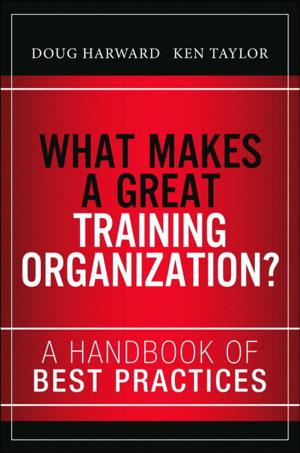| Author: | Watts S. Humphrey | ISBN: | 9780768684971 |
| Publisher: | Pearson Education | Publication: | April 10, 2006 |
| Imprint: | Addison-Wesley Professional | Language: | English |
| Author: | Watts S. Humphrey |
| ISBN: | 9780768684971 |
| Publisher: | Pearson Education |
| Publication: | April 10, 2006 |
| Imprint: | Addison-Wesley Professional |
| Language: | English |
Most modern software development projects require teams, and good teamwork largely determines a project’s success. The Team Software Process (TSP), created by Watts S. Humphrey, is a set of engineering practices and team concepts that produce effective teams, thereby helping developers deliver high-quality products on time and within budget. TSP bridges Humphrey’s seminal work on the Capability Maturity Model (CMM), an improvement framework for the entire software organization, and his Personal Software Process (PSP), practices designed to improve the work of individual developers.
Typical first-time TSP teams increase productivity by more than 50 percent while greatly increasing the quality of their delivered products. However, TSP teams only continue to improve under the guidance of a capable coach. One industrial-strength team, for example, increased its productivity by an additional 94 percent and reduced test defects by 85 percent through three consecutive TSP quarterly product release cycles. Without competent coaching, teams often do not progress much beyond the initial one-time improvement seen after the introduction of the TSP.
Humphrey distinguishes between TSP coaching and TSP leadership, explaining why the skillful performance of both functions is critical. In this practical guide, he shares coaching methods that have repeatedly inspired TSP teams and steered them toward success. With the help of a coach, TSP teams undergo a brief but intense project launch in which they define their own processes, make their own plans, and negotiate their commitments with management, resulting in dramatically enhanced performance.
Whether you are considering the TSP or are actively implementing it, TSPSM–Coaching Development Teams provides the invaluable examples, guidelines, and suggestions you need to get started and keep developing as a team coach. It’s meant to complement Humphrey’s other books, TSPSM–Leading a Development Team and PSPSM: A Self-Improvement Process for Software Engineers. Together, the three works offer a rich resource for improving your software development capabilities.
Most modern software development projects require teams, and good teamwork largely determines a project’s success. The Team Software Process (TSP), created by Watts S. Humphrey, is a set of engineering practices and team concepts that produce effective teams, thereby helping developers deliver high-quality products on time and within budget. TSP bridges Humphrey’s seminal work on the Capability Maturity Model (CMM), an improvement framework for the entire software organization, and his Personal Software Process (PSP), practices designed to improve the work of individual developers.
Typical first-time TSP teams increase productivity by more than 50 percent while greatly increasing the quality of their delivered products. However, TSP teams only continue to improve under the guidance of a capable coach. One industrial-strength team, for example, increased its productivity by an additional 94 percent and reduced test defects by 85 percent through three consecutive TSP quarterly product release cycles. Without competent coaching, teams often do not progress much beyond the initial one-time improvement seen after the introduction of the TSP.
Humphrey distinguishes between TSP coaching and TSP leadership, explaining why the skillful performance of both functions is critical. In this practical guide, he shares coaching methods that have repeatedly inspired TSP teams and steered them toward success. With the help of a coach, TSP teams undergo a brief but intense project launch in which they define their own processes, make their own plans, and negotiate their commitments with management, resulting in dramatically enhanced performance.
Whether you are considering the TSP or are actively implementing it, TSPSM–Coaching Development Teams provides the invaluable examples, guidelines, and suggestions you need to get started and keep developing as a team coach. It’s meant to complement Humphrey’s other books, TSPSM–Leading a Development Team and PSPSM: A Self-Improvement Process for Software Engineers. Together, the three works offer a rich resource for improving your software development capabilities.















